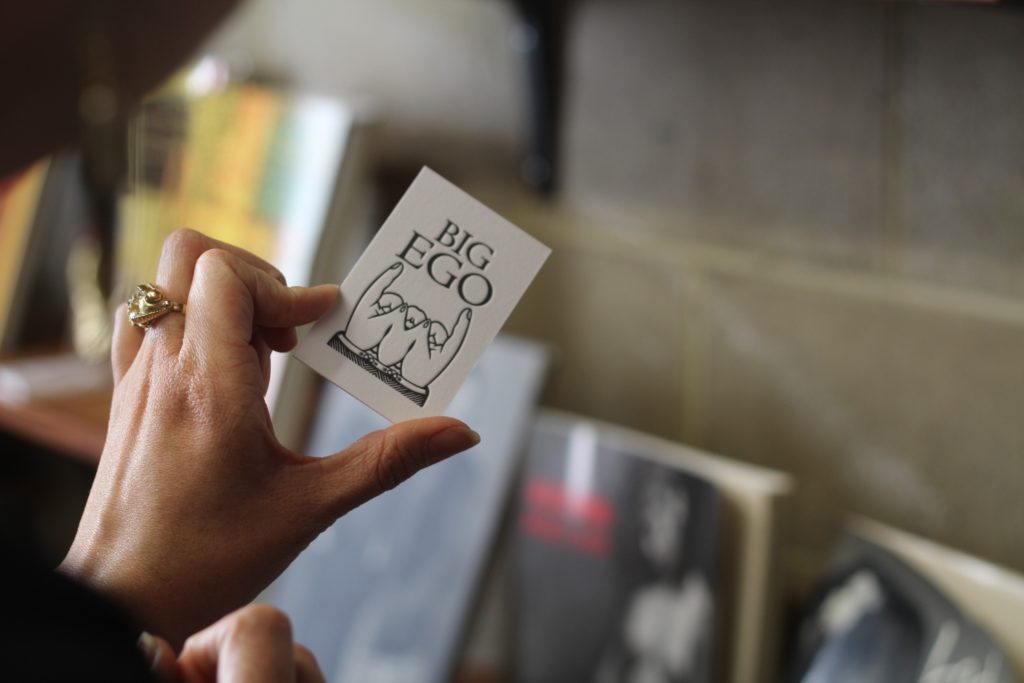BIG EGO BOOKS
Written by Hello Bookshop, Posted in Interviews
Two artists, one underground car park and a collection of carefully curated books form the first in our Hello Bookshop series. We visited Raquel Caballero and Emily Hunt from Big Ego Books in their Kings Cross car park bookshop and discovered not everything can be found online.
Emily: The beginning of Big Ego Books goes back so far.We didn’t really have any close friends at high school and then Raquel and I met at art school and we have been very close ever since. We have always had some business aspect to our friendship. I approached her at art school almost 20 years ago and we started a market stall selling badges. From there it went to second hand stuff, like bags, shoes, clothes.
Raquel: All our businesses have been something we are interested in and want to have fun with. We were obsessed with collecting things from op shops and that is how we got into selling things at the markets. We have been obsessive with everything we do.
Emily: We are both hard workers so we don’t mind getting our hands dirty. When we went around finding things for the markets we would have to go through piles and piles of clothes but then we’d find the special thing that we both loved—and we’d get so excited. It was about finding beautiful parts of history.
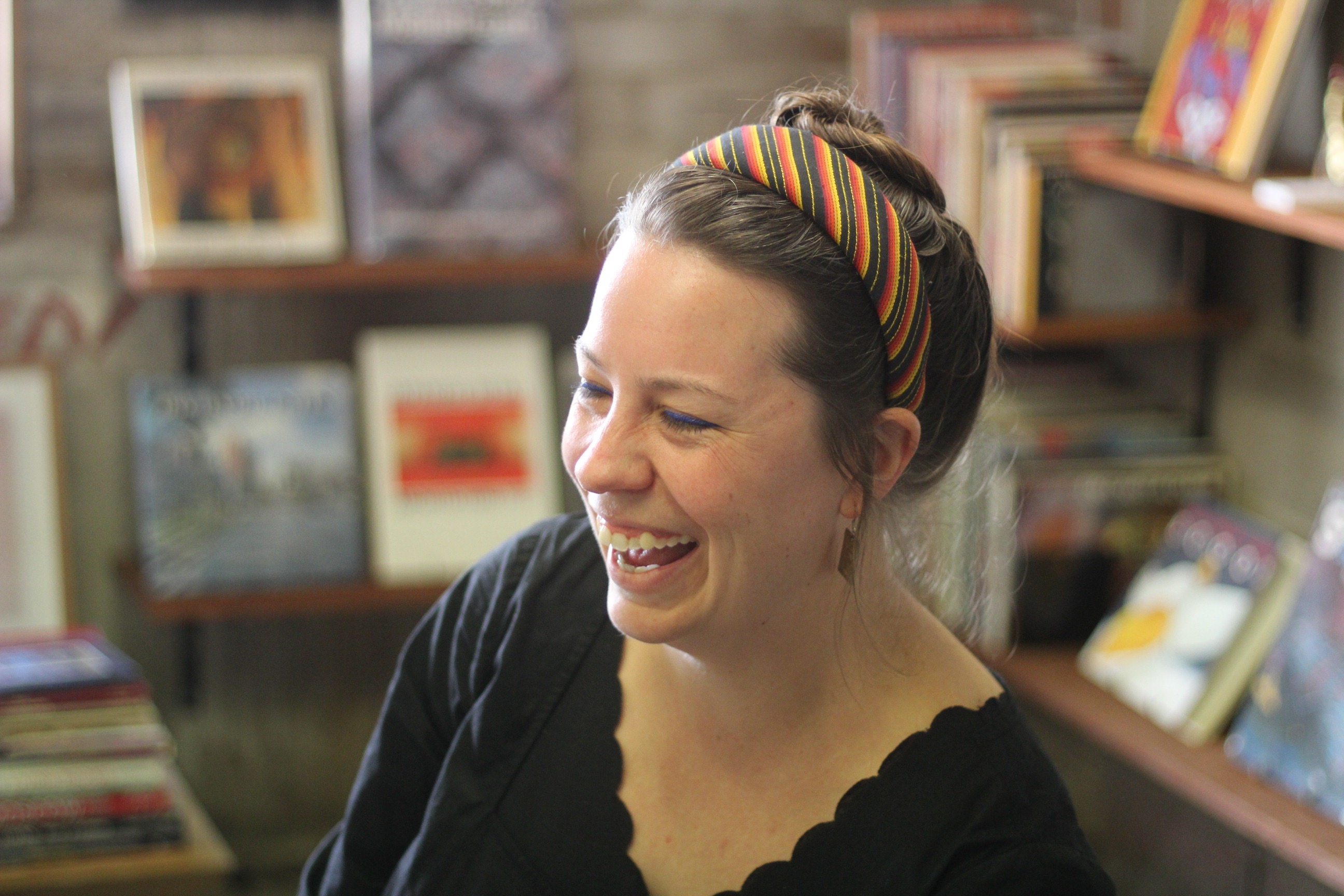 Emily: We then wrote a magazine called DUKE (named after Emily and Raquel’s joint obsession of David Bowie) that incorporated thrift, interviews and artists. After a long break we talked about opening a bookshop. It wasn’t a good time to open a physical shop because I need time to make art, Raquel has her projects, the rent in Sydney is pretty brutal and we don’t have any sort of money behind us to get started. We would have to go into debt which would be too much pressure right now. But having it online and having it here is sustainable because we are still excited about it. And it is in a space that reflects our clientele although it would be nice if we people with more disposable income, such as designers and architects, came in. We have done all the hard work—these books are difficult to find. We have the eye because we have been training it for 13 years. We have both worked for second-hand and new bookshops, therefore we understand the publishers, which books are rare and if we are seeing something that hasn’t been seen before. Raquel found a book the other day that is very valuable and wants to hold onto it which caused a bit of an argument. When you come across those things you actually get hot and sweaty.
Emily: We then wrote a magazine called DUKE (named after Emily and Raquel’s joint obsession of David Bowie) that incorporated thrift, interviews and artists. After a long break we talked about opening a bookshop. It wasn’t a good time to open a physical shop because I need time to make art, Raquel has her projects, the rent in Sydney is pretty brutal and we don’t have any sort of money behind us to get started. We would have to go into debt which would be too much pressure right now. But having it online and having it here is sustainable because we are still excited about it. And it is in a space that reflects our clientele although it would be nice if we people with more disposable income, such as designers and architects, came in. We have done all the hard work—these books are difficult to find. We have the eye because we have been training it for 13 years. We have both worked for second-hand and new bookshops, therefore we understand the publishers, which books are rare and if we are seeing something that hasn’t been seen before. Raquel found a book the other day that is very valuable and wants to hold onto it which caused a bit of an argument. When you come across those things you actually get hot and sweaty.
Raquel: It was A Book About Australian Women from 1974 from a photographer, Carol Jerrems, who died when she was in her thirties. It’s a really important book, an historic document of the time. I couldn’t sell it—it’s priceless.
Emily: If we find another one we will definitely be selling it!
Raquel: For sure! We know we could get $2000 for it easily. But it’s just too special—it might be something we won’t find again for years. I found it in a bookshop in Sydney. I think it had been there for a long long time and it was shelved in the Australia section which most people don’t really look at. It shouldn’t have been there—it should have been in a rare books cabinet. I was shaking and sweating so hard I had to take two layers of clothes off. I found it for $10. It’s something that I never thought would happen. In a Sydney bookshop now it’s so hard to find anything—booksellers know how much things are worth. I got lucky.
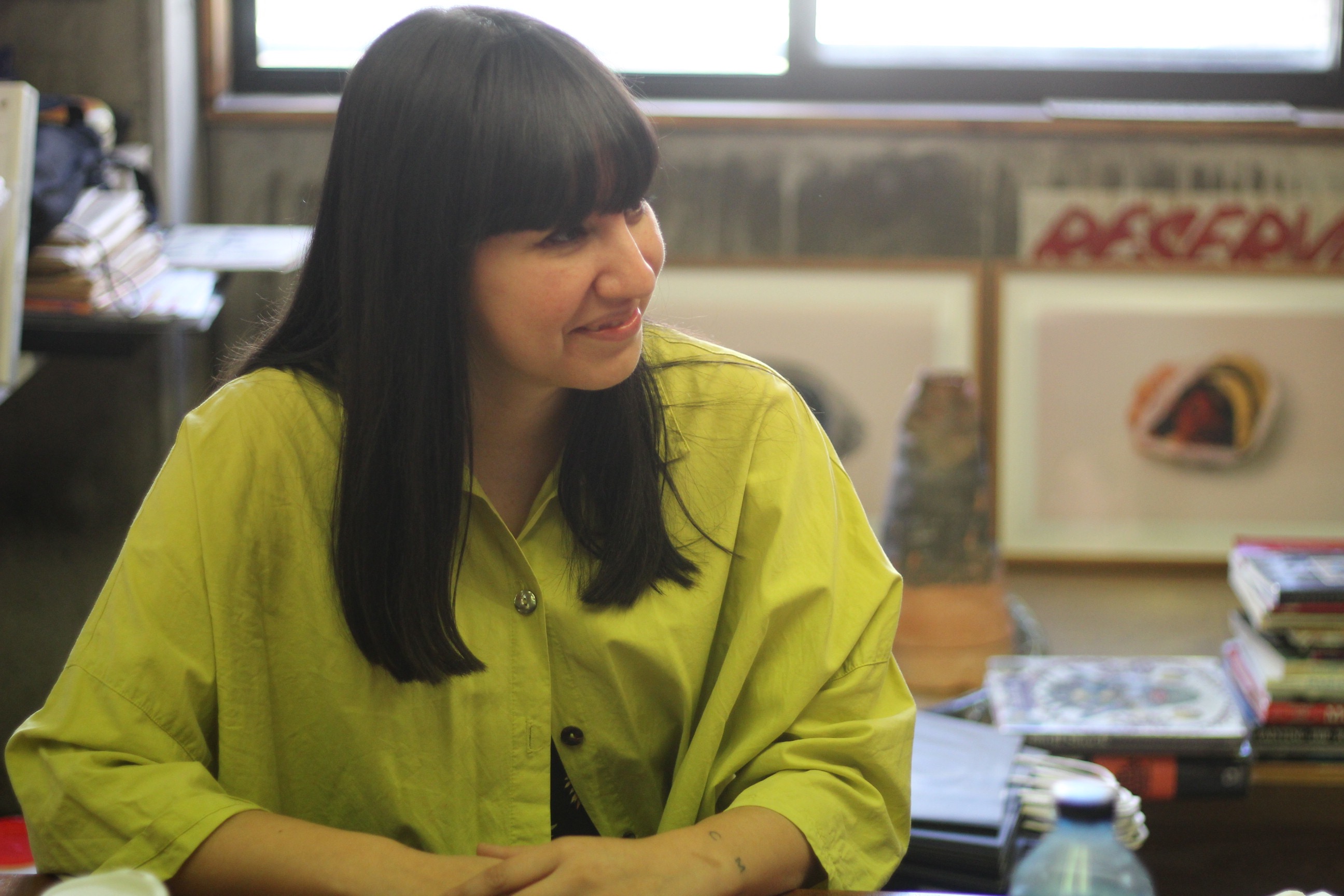 Emily: Raquel is more of a book collector than I am. I love books but I have a different relationship with them. When I go to Raquel’s I always get a pang of jealousy. She has amazing books but that is what is important to her. She is a proper book collector and has some incredibly rare books that are beautiful. For me, I use books for art so there is always a stack that I go through and then I’ll get rid of them—like I might move from books about carnivorous plants, to books about space or miniature art, so I’m a little bit transient in my tastes. Books that come into my world I’ll use them up and then spit them out again. Raquel’s are beautiful things you would never want to get rid of; they are much more like art works.
Emily: Raquel is more of a book collector than I am. I love books but I have a different relationship with them. When I go to Raquel’s I always get a pang of jealousy. She has amazing books but that is what is important to her. She is a proper book collector and has some incredibly rare books that are beautiful. For me, I use books for art so there is always a stack that I go through and then I’ll get rid of them—like I might move from books about carnivorous plants, to books about space or miniature art, so I’m a little bit transient in my tastes. Books that come into my world I’ll use them up and then spit them out again. Raquel’s are beautiful things you would never want to get rid of; they are much more like art works.
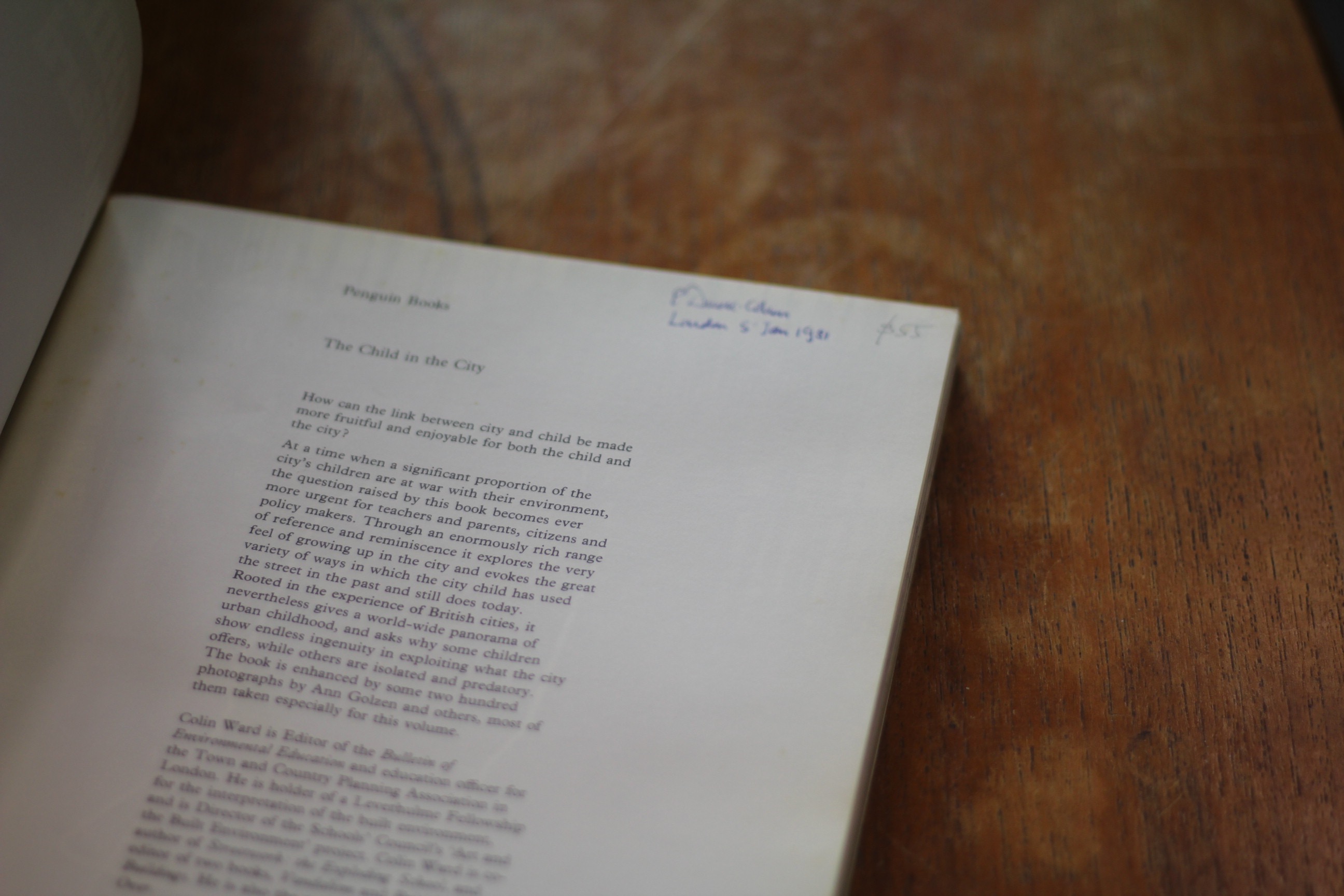 Emily: We normally buy from deceased estates. Out last great purchase was a remarkable book from the estate of Elias Duek Owen. He would write the date of the book and where, so in this one he has written 1931 in London 5th January. Another that is also really amazing is Planning for Play by, Lady Allen, who created playgrounds for kids to explore and hurt themselves—she believed latchkey kids needed a place to go to build, engineer and explore. Of course, all that has now come back into fashion—going back to making your own forts. She was a very wealthy woman who invested a lot of money. There is a great documentary about her. The book is rare but they have reprinted it.
Emily: We normally buy from deceased estates. Out last great purchase was a remarkable book from the estate of Elias Duek Owen. He would write the date of the book and where, so in this one he has written 1931 in London 5th January. Another that is also really amazing is Planning for Play by, Lady Allen, who created playgrounds for kids to explore and hurt themselves—she believed latchkey kids needed a place to go to build, engineer and explore. Of course, all that has now come back into fashion—going back to making your own forts. She was a very wealthy woman who invested a lot of money. There is a great documentary about her. The book is rare but they have reprinted it.
Raquel: But to us it’s not the same thing. We wait until we find the real thing. I think we are purists.
 Emily: The deceased estate of Elias Duek Owen was a lot of hard work but was worth it. It’s not only filthy work but it is also quite emotionally draining because it’s someone collection over their whole lifetime. He moved here from London so he got all his books shipped over, including this book which he’d had since 1931.
Emily: The deceased estate of Elias Duek Owen was a lot of hard work but was worth it. It’s not only filthy work but it is also quite emotionally draining because it’s someone collection over their whole lifetime. He moved here from London so he got all his books shipped over, including this book which he’d had since 1931.
The way the family had treated the books was quite horrific. The guy who ended up taking control of the state was the son of his best friend who was a woman. He knew him growing up and said he was the most intelligent man he’d ever met but he had a partner who took advantage of him in the end. He died when he was 80.
He fought very hard for the Opera House to be finished properly, and advocated for bicycle routes within the city. I have this amazing thesis, bound and typed, that he wrote about public planning, illustrated with beautiful 1970s photos. He was a professor and great teacher—so it was very sad when we saw the state his collection was in. He hadn’t been in there for five years—his partner had been living there and had trashed the joint. The guy who took over the estate was devastated and just wanted someone who could take the books and care for them.
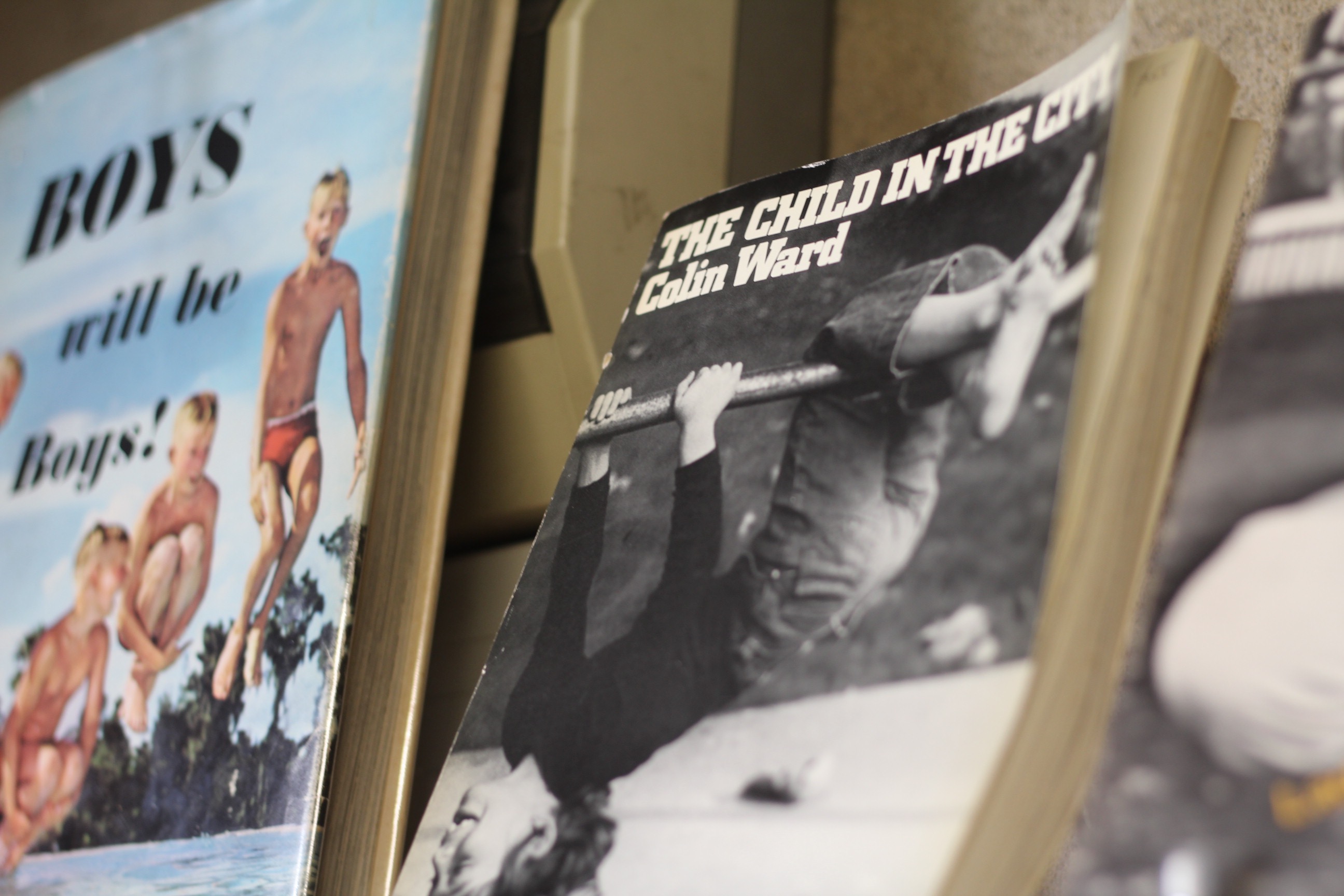 Emily: We came across these Viva magazines. They are so unique—it was a feminist magazine at the time.
Emily: We came across these Viva magazines. They are so unique—it was a feminist magazine at the time.
Raquel: It was started by Bob Guccione who founded Penthouse. He gave the women running it free rein—there is an element of pornography but not really. It’s focuses on women’s issues, such as articles about rape and everything skewed towards women—so it flipped the perspective of Penthouse magazine. It’s super glam, really tongue-in-cheek, with intelligent interviews. It’s for strong women.
Emily: Not only is it a time capsule but it is beautifully laid out. Since then, the only other magazine we’ve come across remotely like it is The Gentlewoman, run by Penny Martin in London. Viva would be great for a designer or anyone interested in that time—you can’t find this stuff on the internet. Every single issue has something special. This stuff is super exciting but also slightly sad. Where is all this stuff now? You open up one of these magazines—and, it’s a whole new world. We have done all the hunting around for these, cleaned them up and put them all together. It’s a thing booksellers do—presentation and curating a genre of books. With branding Big Ego we wanted it to be like it’s a big ego book.
Emily: We appreciate great paperbacks but it’s not our area so when we started Big Ego we agreed that it has to be something that has strength to it. Everything has to have a presence that is completely unique. We love fiction but, again, it’s not our world and so many other people do it better than us. We now have books that are specific to us and incredibly visual.
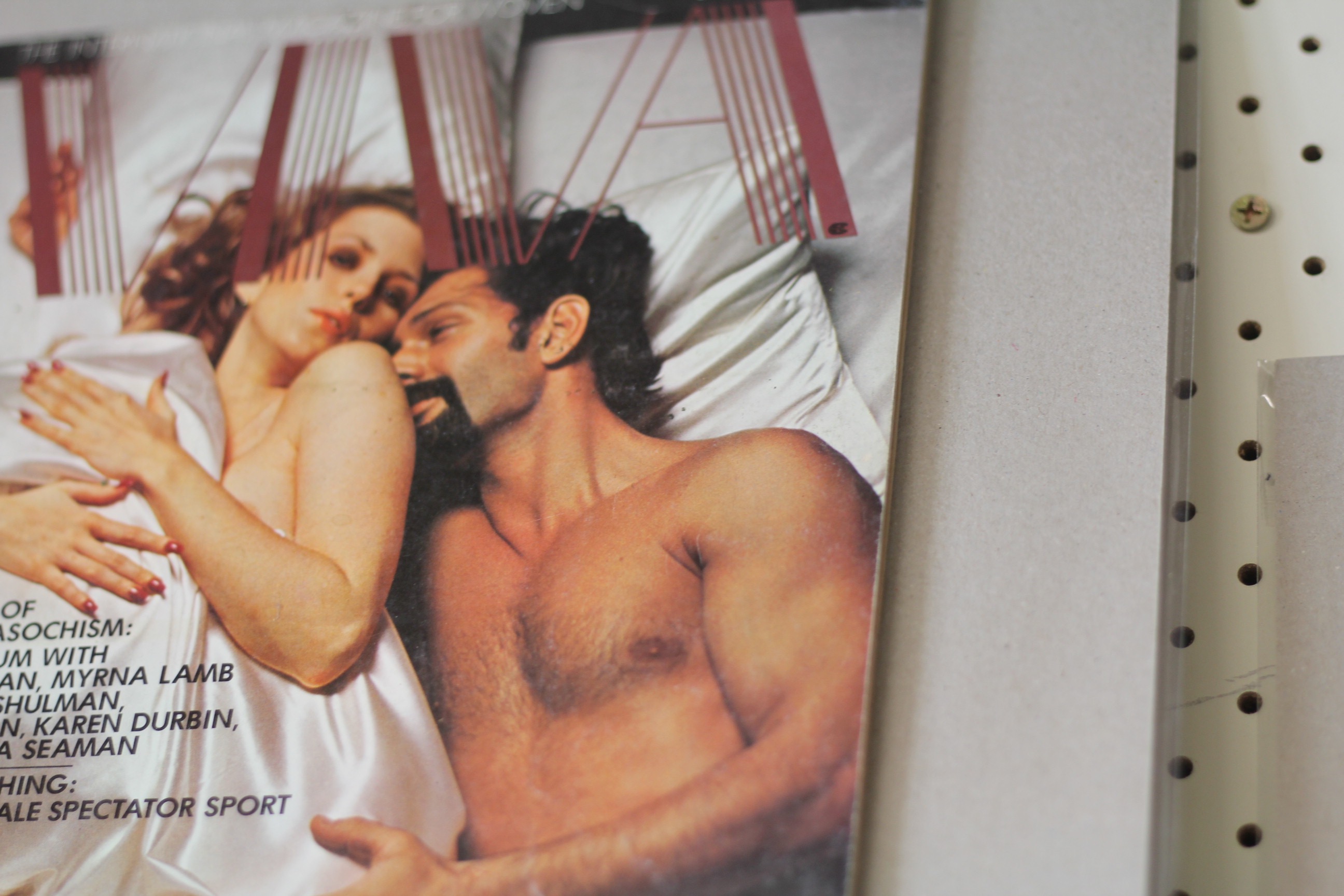 Emily: In Australia rare books are not so much a thing and there are not many women booksellers in Australia selling rare books. When we go to do book fairs we have to fight. We are the youngest there—it’s mainly old men. And they are all sizing each other up and they are like who are these girls who have come out of nowhere. But we have been doing this for ages—and we are now in business for ourselves. So they don’t really know who we are at all.
Emily: In Australia rare books are not so much a thing and there are not many women booksellers in Australia selling rare books. When we go to do book fairs we have to fight. We are the youngest there—it’s mainly old men. And they are all sizing each other up and they are like who are these girls who have come out of nowhere. But we have been doing this for ages—and we are now in business for ourselves. So they don’t really know who we are at all.
Raquel: I think they have been around it for so long they don’t care about the books—they are just a product and something to flip. It’s not like that with us.
 Raquel: We are not surprised we ended up in a carpark with cords coming out of the roof. We have always said we will never be slick—we’re not cool, everything now is too hot.
Raquel: We are not surprised we ended up in a carpark with cords coming out of the roof. We have always said we will never be slick—we’re not cool, everything now is too hot.
 Emily: Our books are grouped together—architecture, interiors, crafts, art, photography and fashion. They are our core categories. We have some weirder, interesting books that you can’t categorise. This one here, for example—Japanese cats dressed up as humans. It’s so cute and it’s crazy—where do you classify this?
Emily: Our books are grouped together—architecture, interiors, crafts, art, photography and fashion. They are our core categories. We have some weirder, interesting books that you can’t categorise. This one here, for example—Japanese cats dressed up as humans. It’s so cute and it’s crazy—where do you classify this?
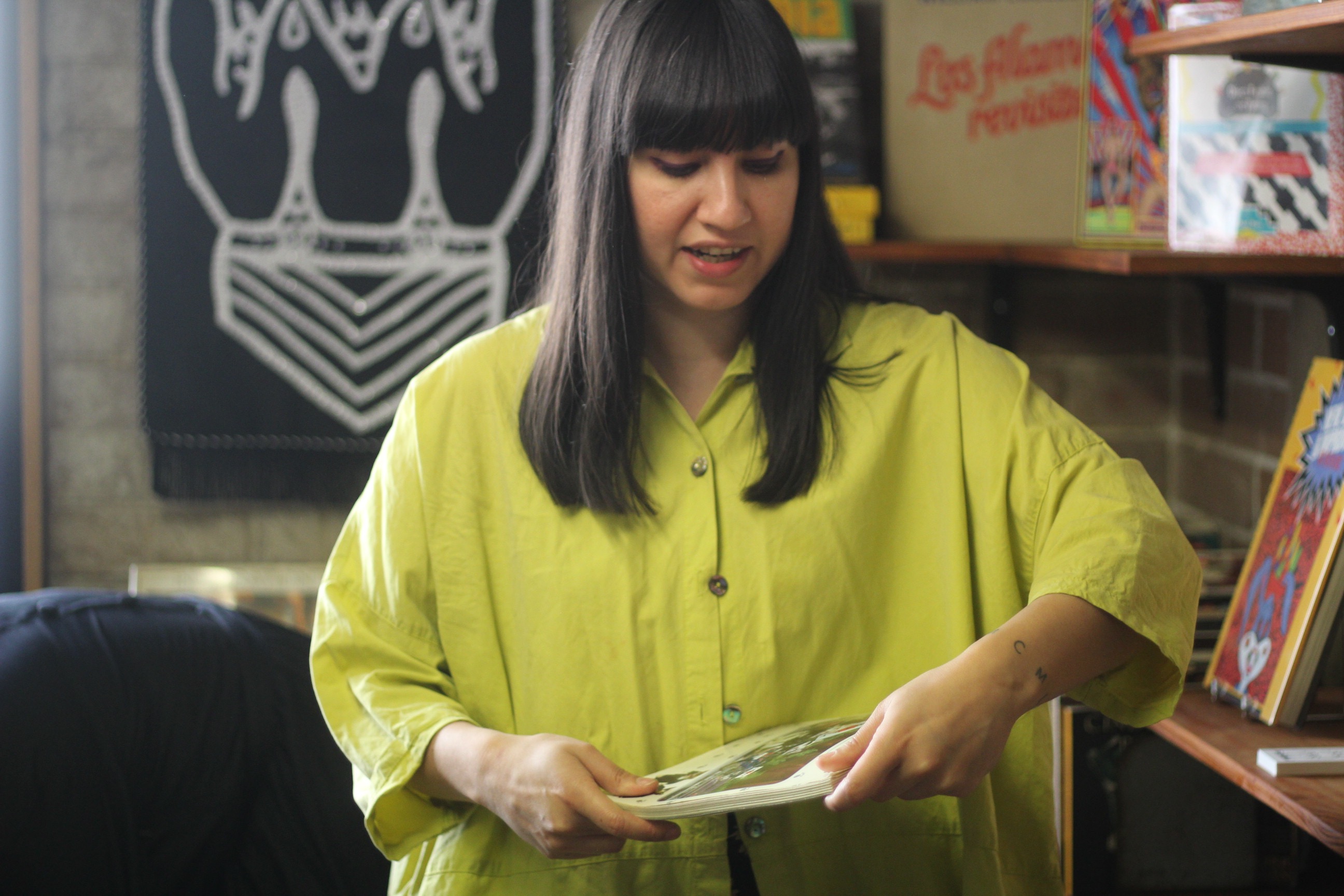 Emily: Sometimes we come across books that show us a whole other area that we didn’t know about. So, for example, this is a part of the fabric workshop. We got into painting fabrics and this book showed us how there was a really big movement of it and it seems so contemporary. This one was a skeleton inked up and then rolled through the bed.
Emily: Sometimes we come across books that show us a whole other area that we didn’t know about. So, for example, this is a part of the fabric workshop. We got into painting fabrics and this book showed us how there was a really big movement of it and it seems so contemporary. This one was a skeleton inked up and then rolled through the bed.
Raquel: Textiles are so big right now. It does look contemporary; this is something that someone could be making now.
Emily: In a way it’s better than what people are doing now.
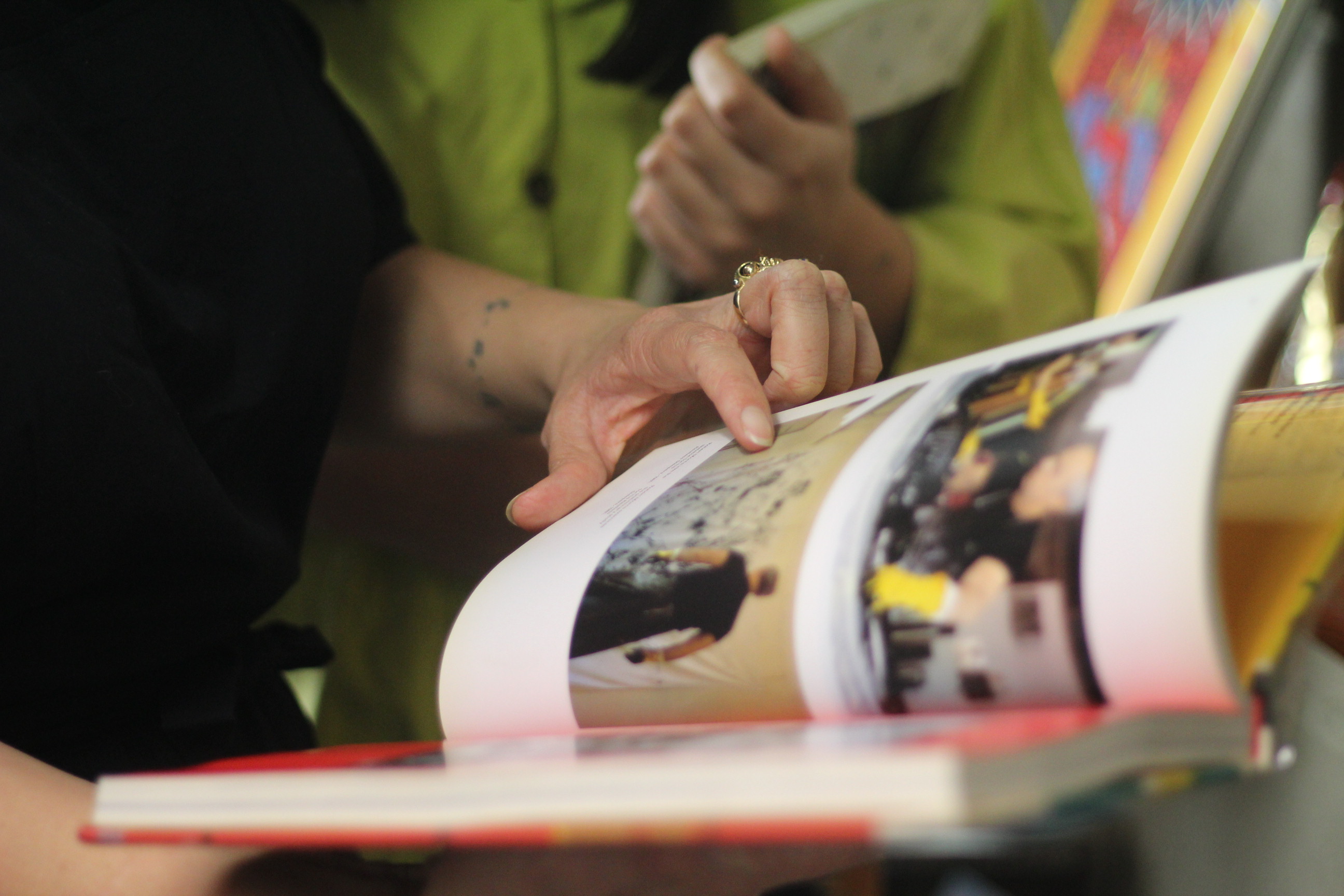 Raquel: This book is awesome—Inspiration—the Best: 81.
Raquel: This book is awesome—Inspiration—the Best: 81.
Emily: This is one of the books we were talking about. It is not super rare but it is amazing—crazy shop window designs for Walt Disney. Collections of inspiration. I want to see this stuff in department stores.
We are really obsessed with this fashion book—Costume Maker’s Art: Cloaks of Fantasy, Masks of Revelation. Thom Boswell found all these individual people and did stories on them and their costumes. They make all their costumes from scratch and they are all so different—mermaids, historic stuff, gargoyles. This is the book you bring out at dinner parties.
Raquel: It’s pre Cos play.
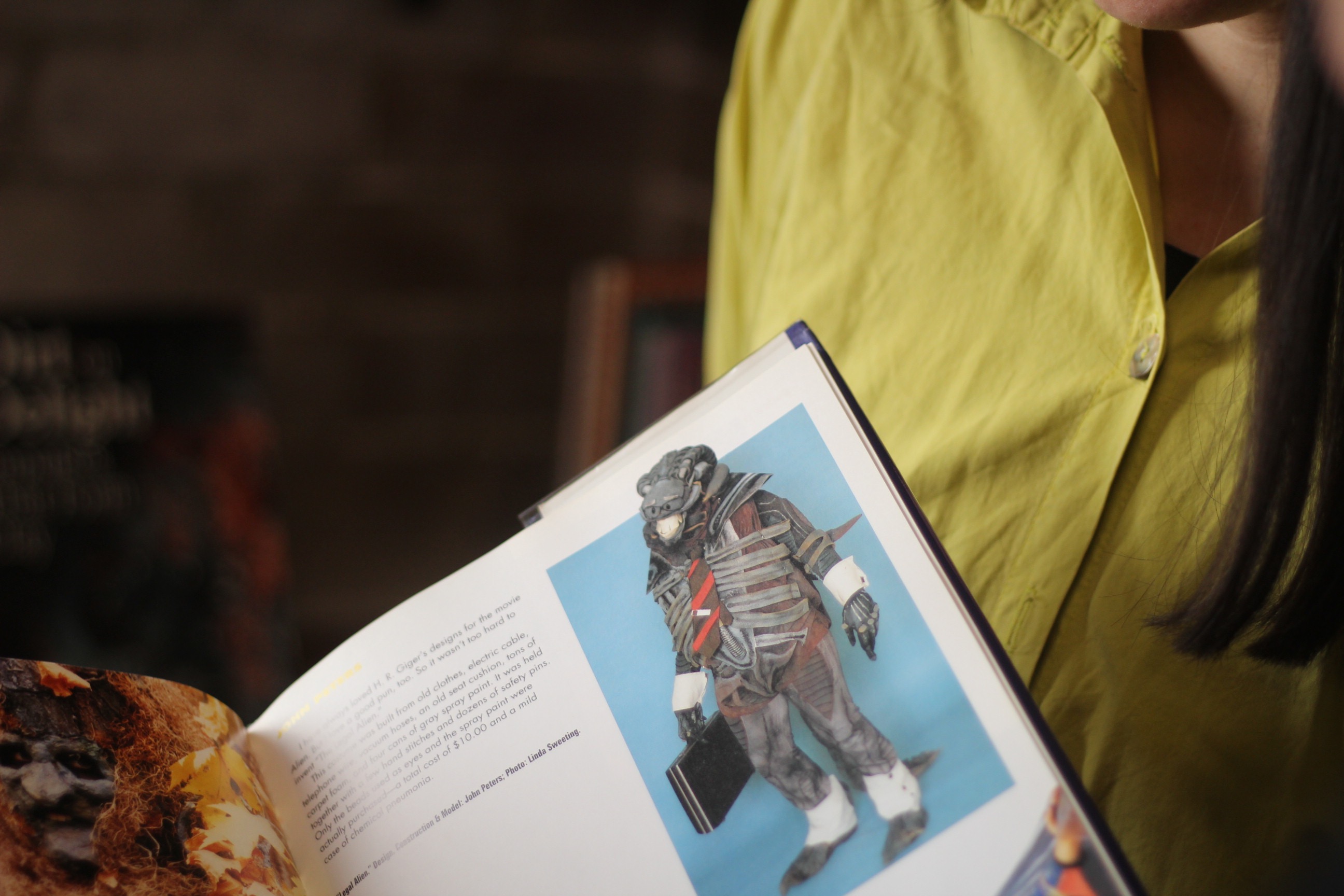 Raquel: This quilt book is incredible—The Quilt: Stories from the Names Project. It includes a massive quilt that they made commemorating AIDS victims in the 80s, and unveiled in Washington. The stories are heartbreaking. It’s a community coming together.
Raquel: This quilt book is incredible—The Quilt: Stories from the Names Project. It includes a massive quilt that they made commemorating AIDS victims in the 80s, and unveiled in Washington. The stories are heartbreaking. It’s a community coming together.
Emily: It is about the families and friends who made the quilts. Some of them are not super refined but that’s not what is about. It’s also an historic document but it is an important place to go when creating.
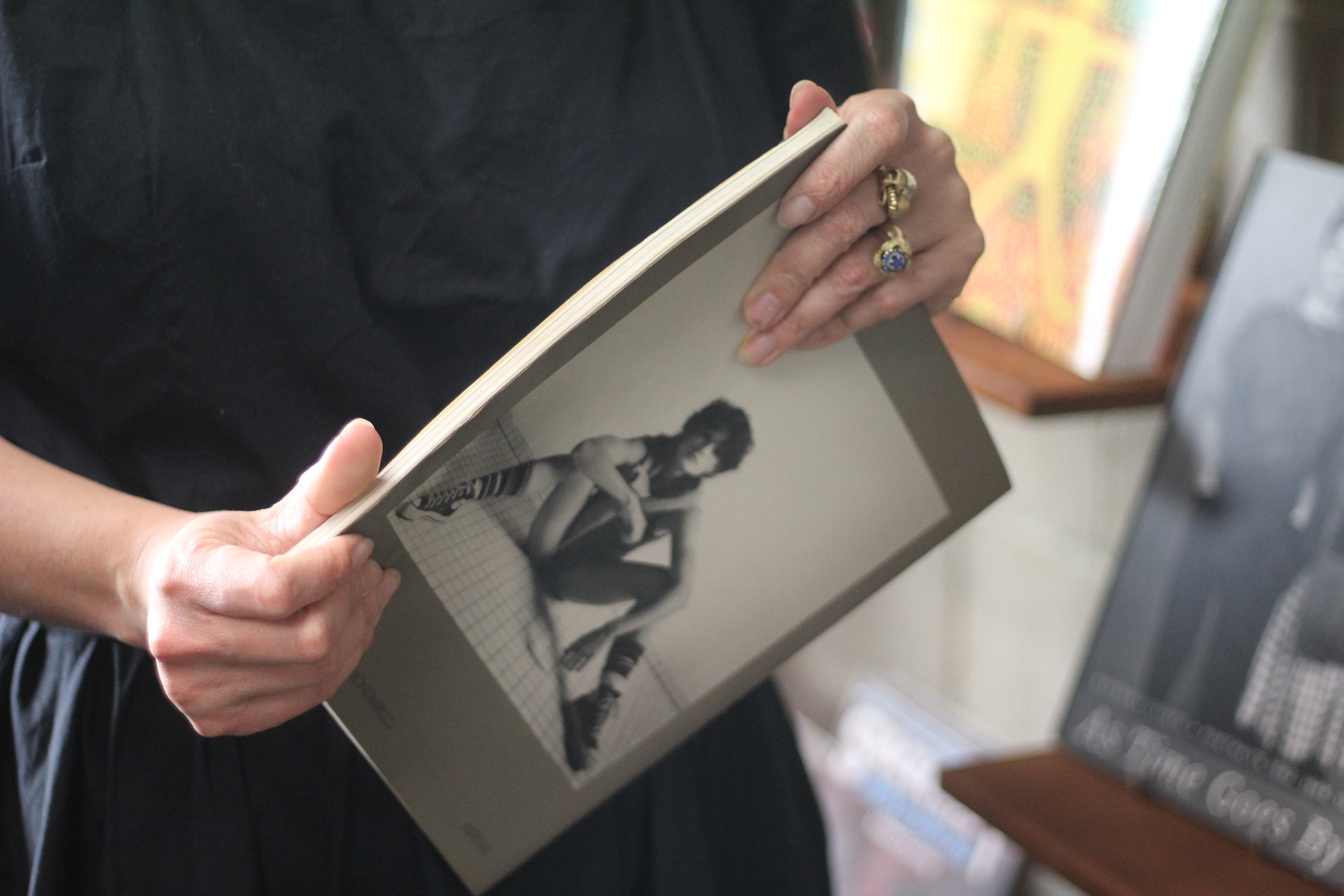 Emily: We have some erotica, including Madonna Nudes. This one is great— Lady: Lisa Lyon. Lisa Lyon who was Mapplethorpe’s main woman, a body builder. There are incredible photos of her.
Emily: We have some erotica, including Madonna Nudes. This one is great— Lady: Lisa Lyon. Lisa Lyon who was Mapplethorpe’s main woman, a body builder. There are incredible photos of her.
Emily: Another great one—As Time Goes By by Barbara Davatz is of couples photographed through the generations.
Raquel: They have added what they are doing now—and you can see them move from being punky to someone quite straight. The fashions are great. People are dressing like that now! It’s still fresh.
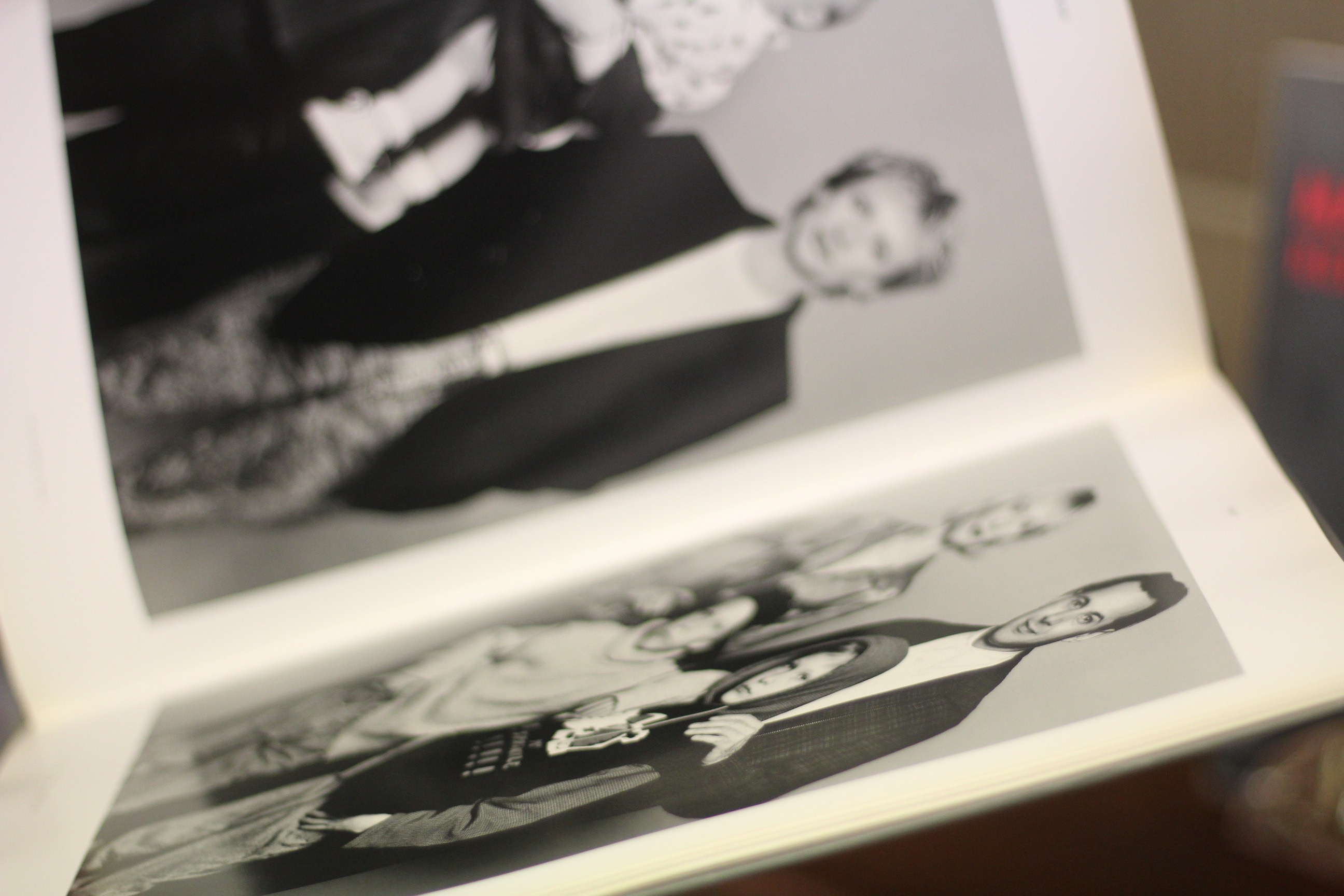 Emily: We launched at Volume Art Book Fair at Artspace. We knew we needed our own space and we approached Seb at Alaska Projects and he said absolutely. Sebastian Goldspink had a keen eye on finding a place that would be free for artists to exhibit in. When he came across the carpark space, it was an dusty room full of old mechanic stuff, but he saw potential and set about acquiring the space for artists. This took some time, but he got it in the end, which led to other projects. We liked how he chose an unusual location, which in many ways is perfect, because it gets a lot of foot traffic and the location is bang in the middle of the Cross.
Emily: We launched at Volume Art Book Fair at Artspace. We knew we needed our own space and we approached Seb at Alaska Projects and he said absolutely. Sebastian Goldspink had a keen eye on finding a place that would be free for artists to exhibit in. When he came across the carpark space, it was an dusty room full of old mechanic stuff, but he saw potential and set about acquiring the space for artists. This took some time, but he got it in the end, which led to other projects. We liked how he chose an unusual location, which in many ways is perfect, because it gets a lot of foot traffic and the location is bang in the middle of the Cross.
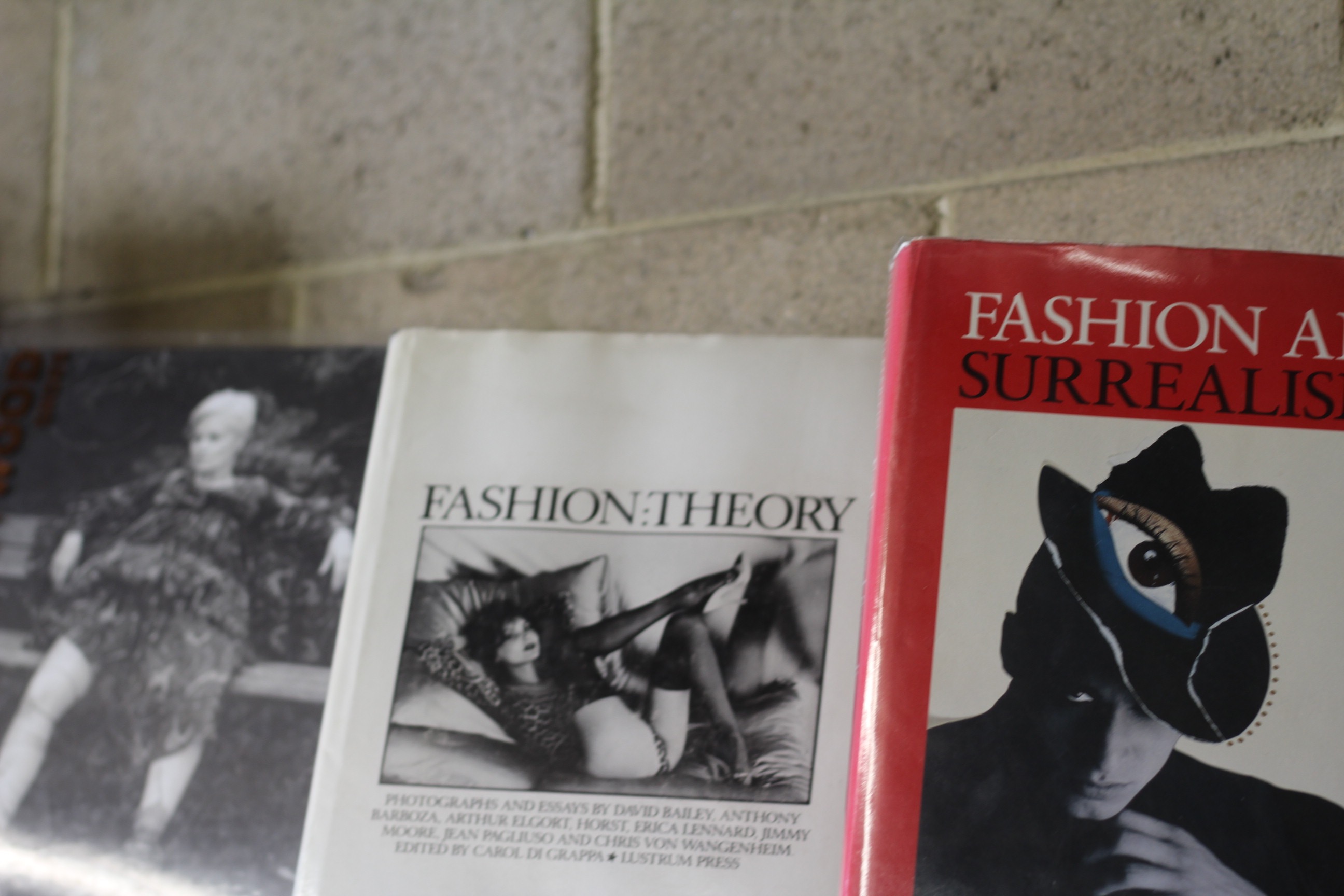 Emily: When our business started to take off, we knew from the beginning we wanted people to look at our books, but we needed a space that wouldn’t change our business model too much, or suck up our time. Alaska was perfect for many reasons, one is the weird location and two is Sebastian and Bradley’s belief in our business. We approached them because we saw like minded people in the art world.
Emily: When our business started to take off, we knew from the beginning we wanted people to look at our books, but we needed a space that wouldn’t change our business model too much, or suck up our time. Alaska was perfect for many reasons, one is the weird location and two is Sebastian and Bradley’s belief in our business. We approached them because we saw like minded people in the art world.
My husband Andrew Hurle created the logo. He did a couple of finger versions and we instantly liked three fingers, one because it conjurers up secret sign language, giving the rude finger, cat’s cradles and because it is striking. The fingers have a Big Ego and are proud of it.
 Raquel: Being online is all good and fine but nothing compares to actually coming in and looking at books. It’s an object so you need to look through it.
Raquel: Being online is all good and fine but nothing compares to actually coming in and looking at books. It’s an object so you need to look through it.
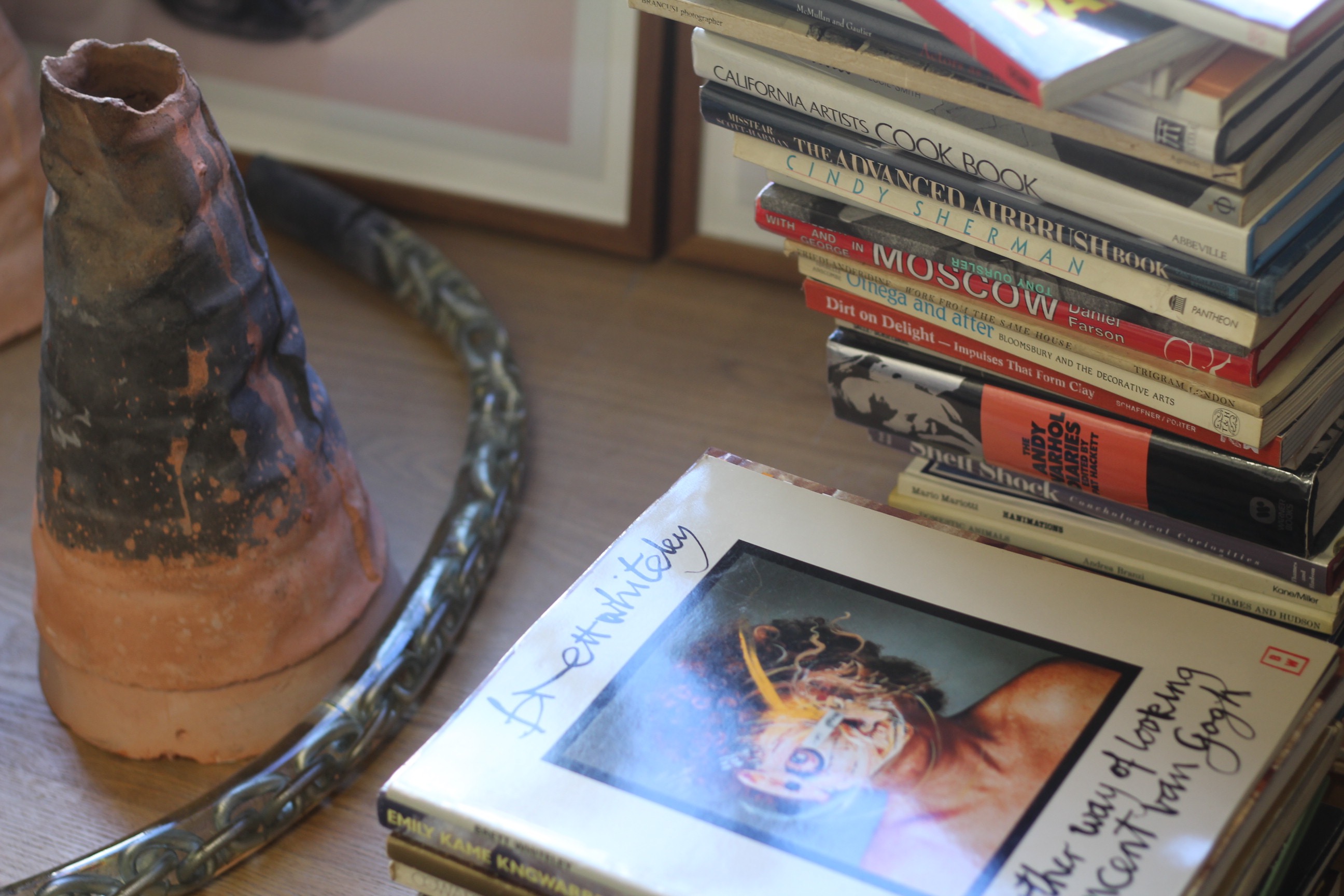 Emily: You will never find all the stuff you want to find online. Our clientele consists mainly artists, and we have some regulars—artist Katy Plummer, Rafaela Pandolfini who is a photographer, people like us.
Emily: You will never find all the stuff you want to find online. Our clientele consists mainly artists, and we have some regulars—artist Katy Plummer, Rafaela Pandolfini who is a photographer, people like us.
Raquel: People in creative fields.
Emily: The problem with creative fields is people don’t have a lot of money. We actually need to cross a little over to people who use these books as references. We are very ambitious about it but we are not pushy. We wait for people to come to us, which normally doesn’t work.
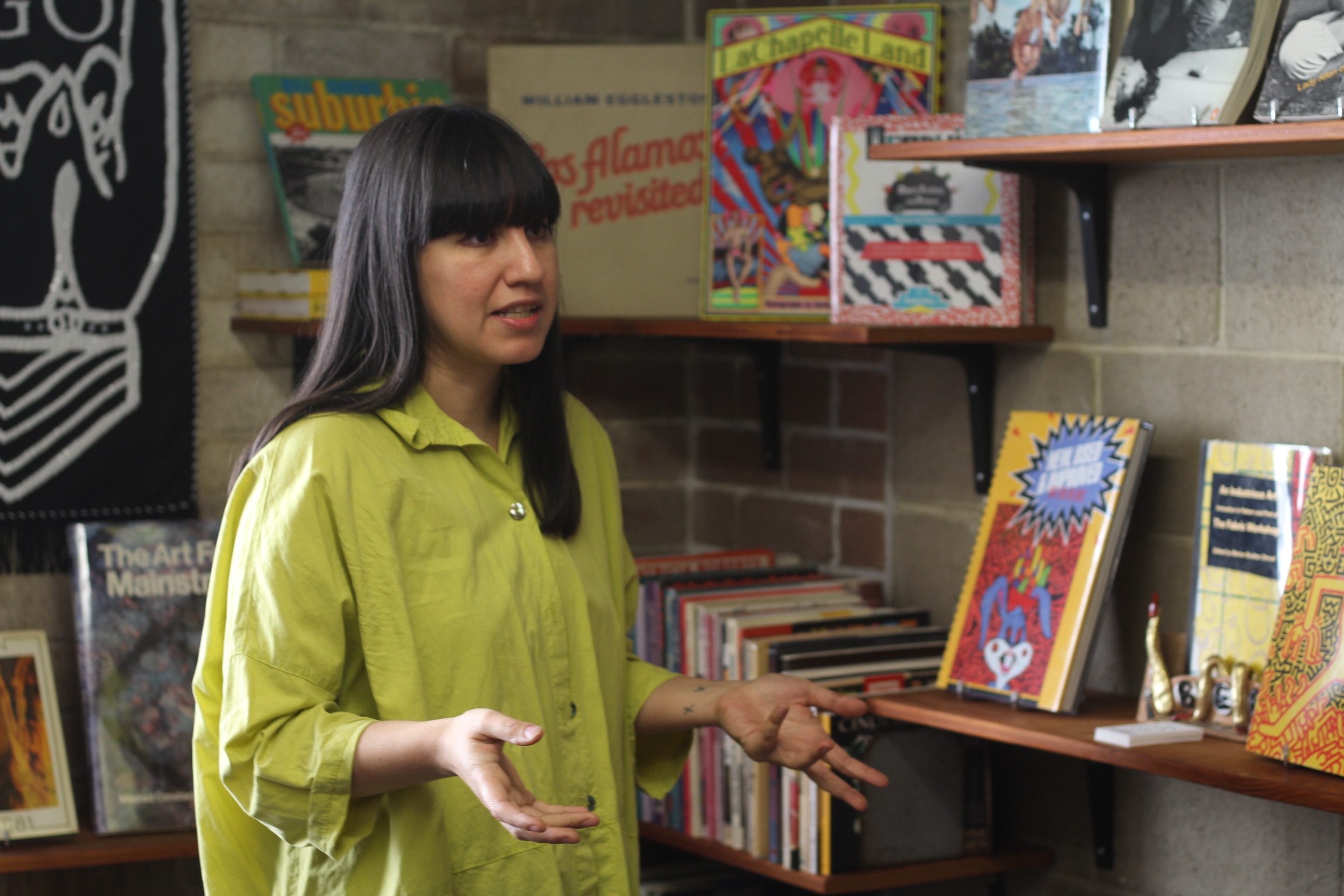 Emily: We have so many favourite books. This book is not super rare, but it is really interesting Dirt on Delight: Impulses That Form Clay. This book started the renaissance in ceramics. The art world picked up ceramics in a big way in the last four years. This exhibition was in 2011 and kicked off a lot of things.
Emily: We have so many favourite books. This book is not super rare, but it is really interesting Dirt on Delight: Impulses That Form Clay. This book started the renaissance in ceramics. The art world picked up ceramics in a big way in the last four years. This exhibition was in 2011 and kicked off a lot of things.
It’s really interesting the way it has been broken up into different categories of making clay. It encapsulates a lot of different ways of making clay—really refined work as well as artisan work from 1966, which is now influencing a lot of people. They’ve brought back George Ohr who is an amazing ceramist and American artist Eugene Von Bruenchenhein was an outsider and made these visionary paintings, and all these incredible sculptures made out of chicken bones. He also made clay so a lot of his work was completely undiscovered.
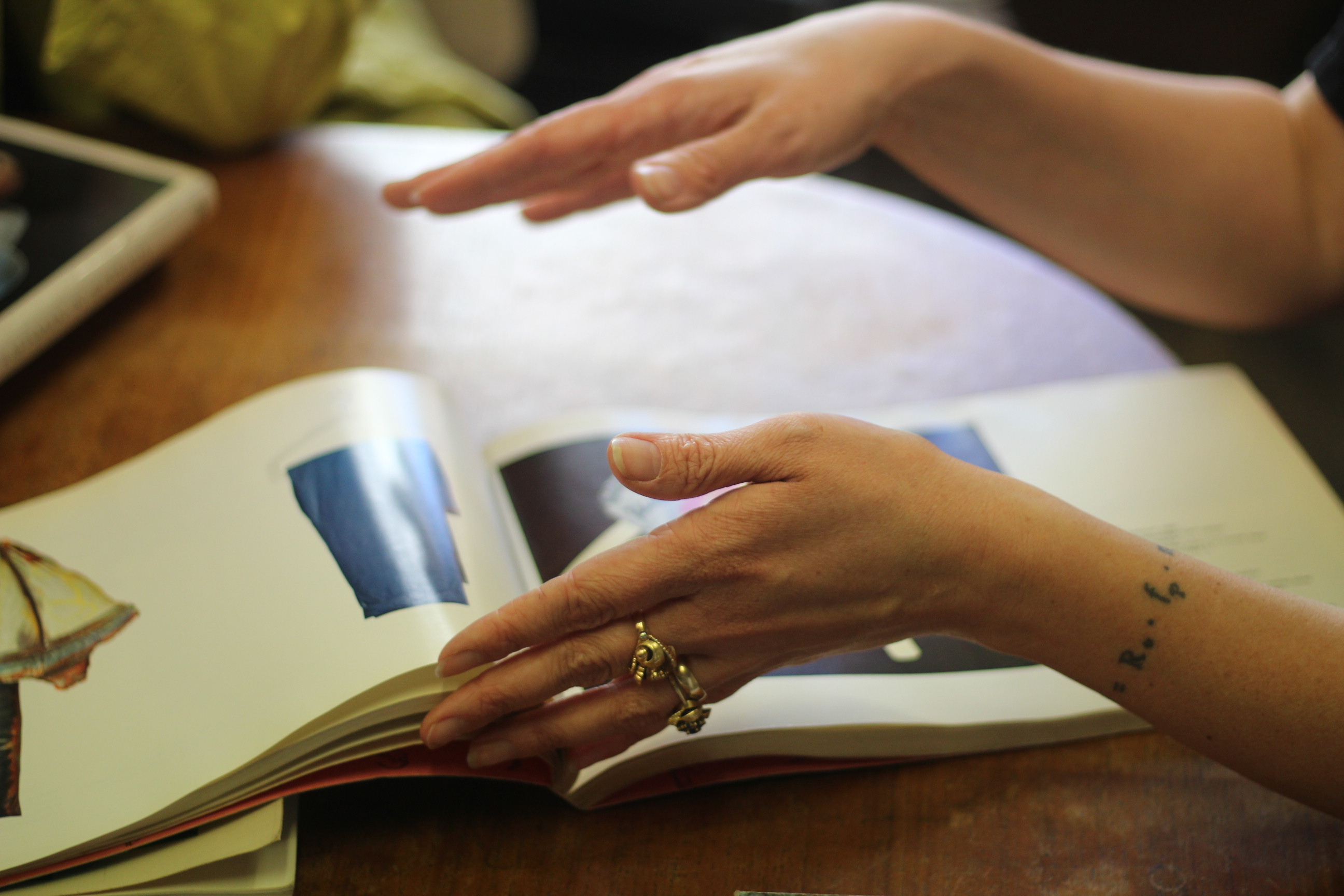 Emily: Many of these artists had been forgotten but this show brought them all back. Beatrice Wood created lustres. She was the lustre master. George Ohr was a production guy who lived in Missouri. He would throw around 200 pots a day and do really strange things to them, folding them inside out.
Emily: Many of these artists had been forgotten but this show brought them all back. Beatrice Wood created lustres. She was the lustre master. George Ohr was a production guy who lived in Missouri. He would throw around 200 pots a day and do really strange things to them, folding them inside out.
He was the precursor of Kathy Butterly and his stuff is highly collectable now but at the time people were like, ‘What is this?’ He was making this stuff in 1895–1900s. This book is great for an artist to discover the pure essence of where all this stuff comes from.
 Emily: The Claes Oldenburg is just hilarious—I love it. I found out all about his first partner who completely did all the work for and with him. We are really into seeing things come into fashion and where that core is and making that a reference. It’s a pain to put in the shelf because it’s so long but it’s a really great book. The format of it is really good to view.
Emily: The Claes Oldenburg is just hilarious—I love it. I found out all about his first partner who completely did all the work for and with him. We are really into seeing things come into fashion and where that core is and making that a reference. It’s a pain to put in the shelf because it’s so long but it’s a really great book. The format of it is really good to view.
Raquel. It’s beautiful as well. Look at that pink, inside the cover with the green. It’s like candy. You can see how much he has changed as well because he then went into large public sculpture. But I find the beginning points of things really fascinating with art.
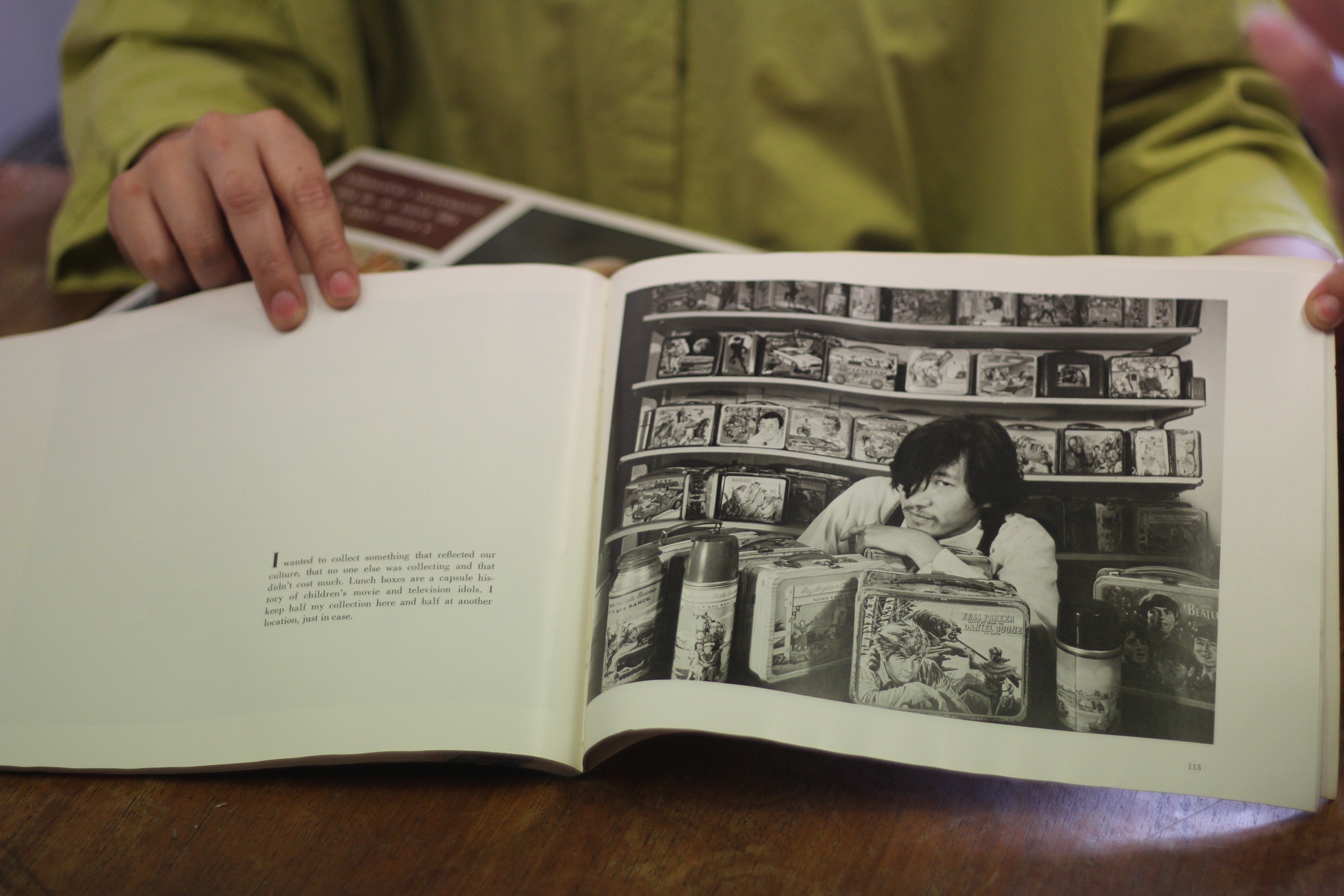 Emily: And Raquel discovered this one—The Passionate Collector by Ellen Land-Weber.
Emily: And Raquel discovered this one—The Passionate Collector by Ellen Land-Weber.
Raquel: Oh, I love this one—beautiful publication, strong image, the font. It’s what we say about all out books—it’s a package—everything combined makes it amazing. It has just one page for each person on their collection.
Emily: There is a bit of a format style that happened in the 70s, very much aligned with American photographer Bill Owens. There is a little bit of a story about a person, then the photo, and usually a square black and white photo. But just done so beautifully and people still do it. Like the book about the shopkeepers in Newtown. Also it’s about regular people and what they do with their lives. For example, this guy here has a really great collection of pots. Great photos and they are all so proud.
Raquel: Sometimes when I’m in my living room looking at all my books, I think I have every book I want but when I go into a shop and I see something like this, I go no way! This is a book that was made for me, specifically for me. That’s what it feels like sometimes.
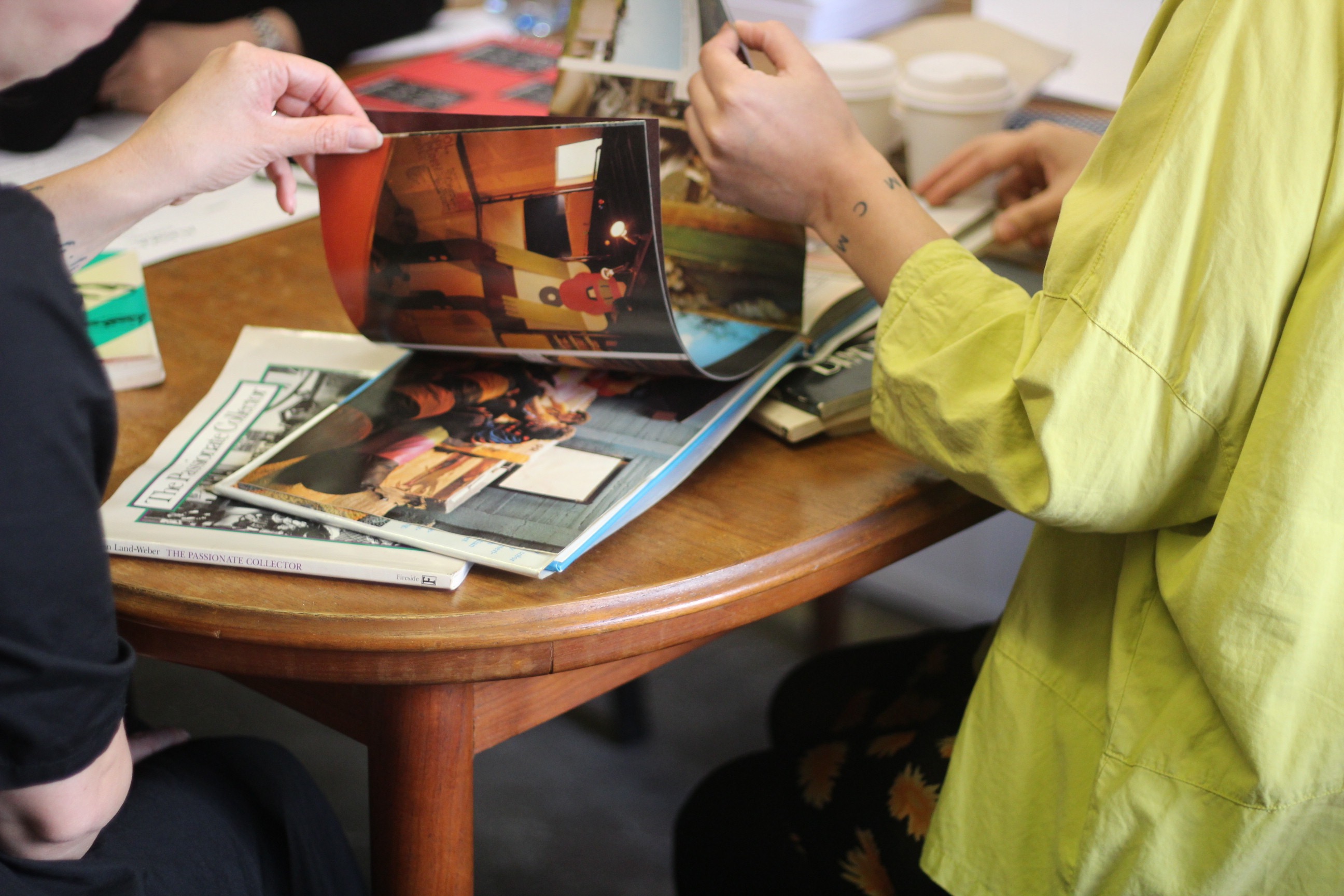 Raquel: This one is really awesome—The Artist Craftsman in Australia. It’s about Australian craft in the 1970s—there are a lot of forgotten people in here and a lot of women. Great clothes and rare for a colour book back in the 70s.
Raquel: This one is really awesome—The Artist Craftsman in Australia. It’s about Australian craft in the 1970s—there are a lot of forgotten people in here and a lot of women. Great clothes and rare for a colour book back in the 70s.
Emily: What’s really nice about it is they will start with the photo of the artist, something about their work and then they will show them making it in the studio. We love seeing what the artist’s world was like.
Raquel: My favourite is Mirka Mora with all her soft toys. And also what we really love is looking at how they lived. This is really cool. People should know about this stuff.
Emily: You would never find this on the Internet.
Raquel: It is a historical document too but in a beautiful package.
 Emily: We love this guy Charles Jencks. He is still around—he did these great format books, such as Daydream Houses of Los Angeles.
Emily: We love this guy Charles Jencks. He is still around—he did these great format books, such as Daydream Houses of Los Angeles.
Raquel: He also writes about how LA has this totally weird architecture. Spanish and then Tudor next to craziness. He is very quick and witty—For example, he is talking about the giant doors. And finally the door becomes so huge that one day the whole house will just be one door.
Emily: His books are getting really hard to find. The one on the skyscrapers is great.
Raquel: There is one called the Bizarre Architecture about outsider artists that have made their own structures.
Emily: It’s all in the same format. This is our main dude and he relates to a lot this stuff—Bill Owens’s 1977 book Working: I Do It For the Money. It’s all about people and the jobs they do. He did another great book called Suburbia. We have a newish copy of the reprint. Something about turning the page, wondering what their lives were like.
Raquel: People’s lives, great photos.
Emily: It’s like a still moment and then we move onto the next one. It quietens you down a little bit—getting off the screen and looking at other people because people are interested in other people. It’s a nourishing way of discovering other people.
Raquel: You can get addicted to a screen and scrolling, scrolling, scrolling. This is a problem we have with our Instagram—we feel that a lot of people just want to like the image. And keep scrolling and don’t really take it in. It doesn’t translate to them that this a book. There is so much more in the book—so much more than just the image.
Emily: I remember reading about how the book is so perfectly evolved. Because it is so thin of you can easily take it with you and the pages of knowledge are all so sophisticatedly put together. You just flip a page and there is another world.
Douglas Adams had a great quote about the perfect evolution of a book. ‘Books are sharks … because sharks have been around for a very long time. There were sharks before there were dinosaurs, and the reason sharks are still in the ocean is that nothing is better at being a shark than a shark. Look at a book. A book is the right size to be a book. They’re solar-powered. If you drop them, they keep on being a book. You can find your place in microseconds. Books are really good at being books and no matter what happens books will survive.’
Raquel: We did a residency at Paramount building at The Office Space and we gave them ten of our books and we had them displayed so people could look at them. This one is called Archigram—which was the name of a group of dissatisfied architects in the 1960s that got together and started planning their dream societies. Nothing was ever made of it—it was just plans, graphics and dreams. And it is just amazing stuff. They would invent things like a suit you would wear and, instead of owning a house, you would live in the suit. It would curl up into a little snail. Crazy, psychedelic, weird stuff—they must have been high but super smart and really progressive.
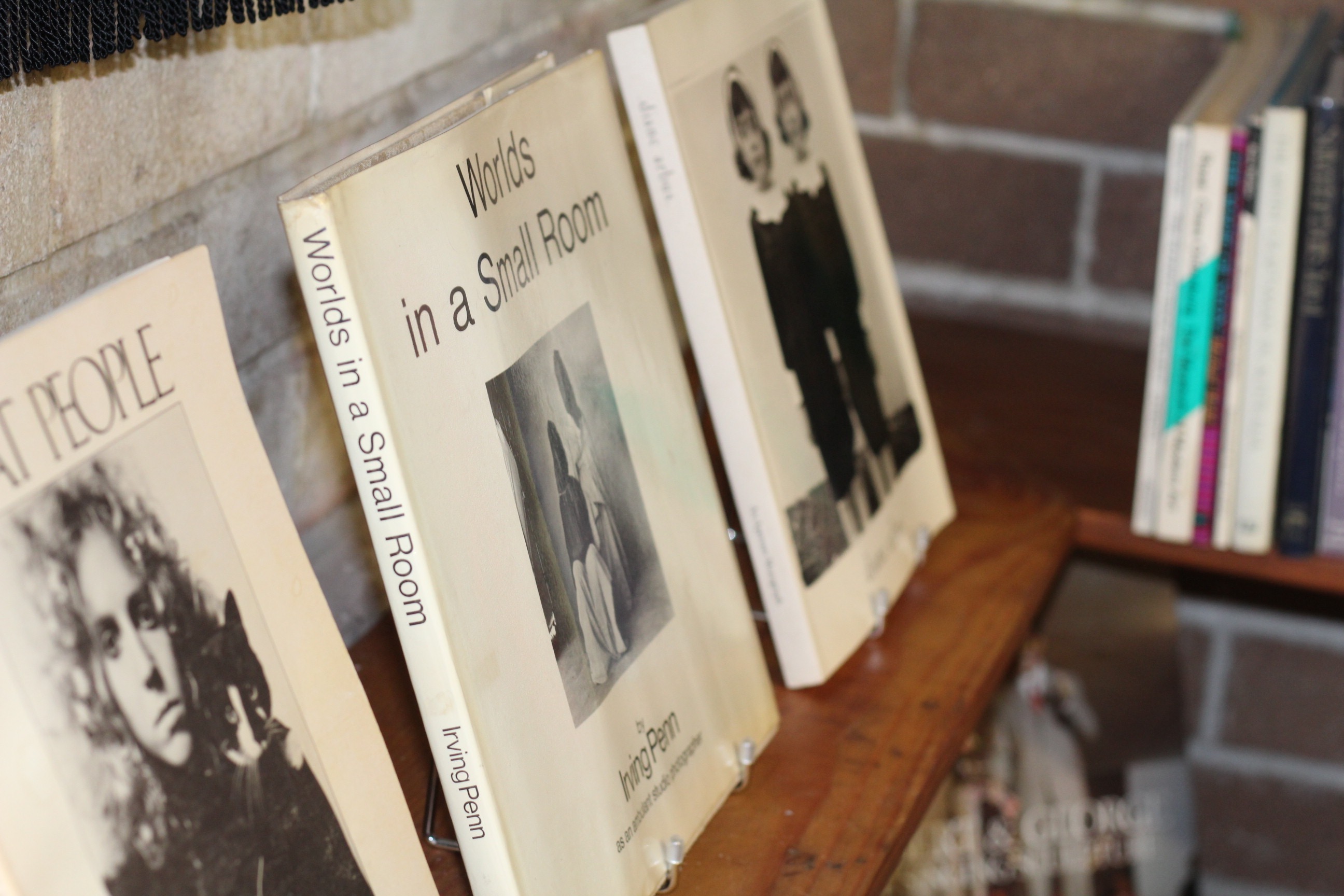 Emily: (On the future of Bookshops) There will be smaller print runs for rare books. Raquel works for Kinokuniya books.
Emily: (On the future of Bookshops) There will be smaller print runs for rare books. Raquel works for Kinokuniya books.
Raquel: It’s funny because it is still busy in there. And it’s funny to go out in the world and hear people say, ‘Oh I thought books were dead’. I think the future is going to be more refined. Smaller booksellers, limited edition smaller print runs, more independents. It’s not going to die. It will never die. We are getting stronger because everything is becoming more beautiful—the presentation of publications matters.
Emily: With things like textbooks—stop destroying paper for them. We aren’t against the Kindle—we think there is a space for that. Things that get outdated easily, such as Lonely Planet guides. A lot of that should be on tablets.
 Raquel: People are making some amazing art books at the moment (I work in the art and design department). The most exciting part of my job is seeing all the new books coming in. Just beautiful—even just touching the paper is great. So hopefully there will be a balance for the environment. There is a lot of waste in the traffic of publications. Bookshops buy a lot to make the bookstore look really busy and then they send it all back to the supplier again.
Raquel: People are making some amazing art books at the moment (I work in the art and design department). The most exciting part of my job is seeing all the new books coming in. Just beautiful—even just touching the paper is great. So hopefully there will be a balance for the environment. There is a lot of waste in the traffic of publications. Bookshops buy a lot to make the bookstore look really busy and then they send it all back to the supplier again.
Emily: The first bookshop I worked in was constantly returning things—so much money spent going back and forth. But books are going to become more valuable. You can buy a monograph from a publisher now and it will increase in cost in two years. They are an investment for a lot of people. Art collectors like to buy art books that go with the art work they have—and that’s another industry.
Sometimes we will do a book fair and come out with thousands of books. Other times we will go through every single book and come out with three—but they’ll be three of the best. It’s still worth it for us to get three books out of a thousand but it is going through a lot of shit. If our dream comes true and they stop printing all these terrible books it wont be so bad. I think it is incredibly destructive for the environment. For example, text books cost students so much money and they are so heavy. How are you supposed to carry them around? And then no one wants them when they get outdated.
 Raquel: I have a lot of books at home but my main thing is photography.
Raquel: I have a lot of books at home but my main thing is photography.
Emily: I have a lot of art books. My area is ceramics. At any given time I have books in the studio that I will be referencing and looking at. I’m very loose about what I am interested in—they are not valuable and not Big Ego books just reference books for my art making.
Raquel: My books are for escapism and yours are for creating.
Emily: I would like to discover Karl Lagerfeld’s book collection! He has a whole library. He shelves all books horizontally because they get damaged otherwise so he has them flat in stacks—because of the older French stuff.
Raquel: I would like to raid John Waters’ book collection. He would have crazy stuff on serial killers, weird biographies, oddities and he is a massive art collector so he would have a big art book collection. I remember reading a quote of his about success: ‘Success is about buying a book without looking at the price’—and I was like YES! That is success.
I am on the look out for the book Les Diners de Gala—it’s a Dali cookbook. He did two—Dinner and Wines. I have wines and it has a beautiful gold cover and the most ridiculous recipes ever, crazy shit you are never going to cook.
Emily: For me I’m packing up and going overseas for a little while so the idea of collecting for myself is unnecessary. I am culling at the moment. I am going to India, and then to Europe. Yes, I will be looking out for books for Big Ego on my travels. I have found some very good books in Berlin in the past. Calcutta has some amazing books too. The business will continue and there will be a European side to it.
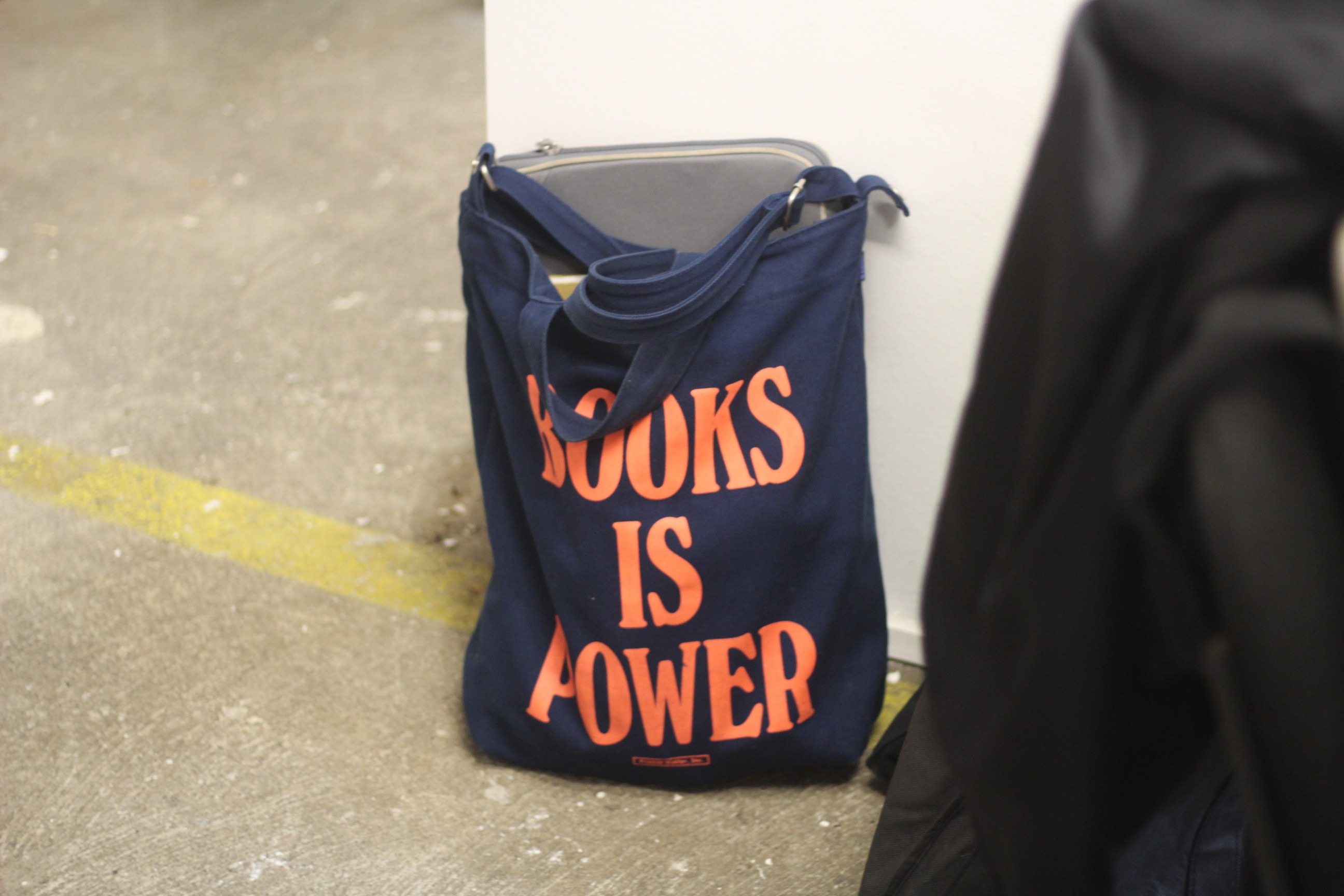 About Big Ego Books
About Big Ego Books
Big Ego Books arose from the desire to bring together a library of great artists and writers whose original, inspiring and sometimes maniacal work resides on the fringes of popular culture. A passion project for Sydney-based collaborators Raquel Caballero and Emily Hunt, Big Ego Books is a personally sourced and curated online collection of fascinating, hard-to-find, and frequently unusual titles that reflect the singular tastes and preoccupations of its creators.
Raquel Caballero is an exhibited artist, reformed librarian, and literary obsessive with a decade’s experience in publishing and bookselling. Her fine art work occupies a peculiar space between homespun craft and pop culture, merging outsider influences with celebrity fascination in unpredictable, engaging ways.
Emily Hunt is an internationally exhibited artist who works across a variety of mediums, employing everything from ceramics and dioramas to etching and watercolours in her pursuit of a catharsis of the grotesque. She has worked in publishing and bookselling for over a decade, while continuing to confront audiences with the vulgar, profane and intemperate nature of the present.
Leigh Russell and Mischa Byrne spoke to Big Ego Books on the 19th July 2016.
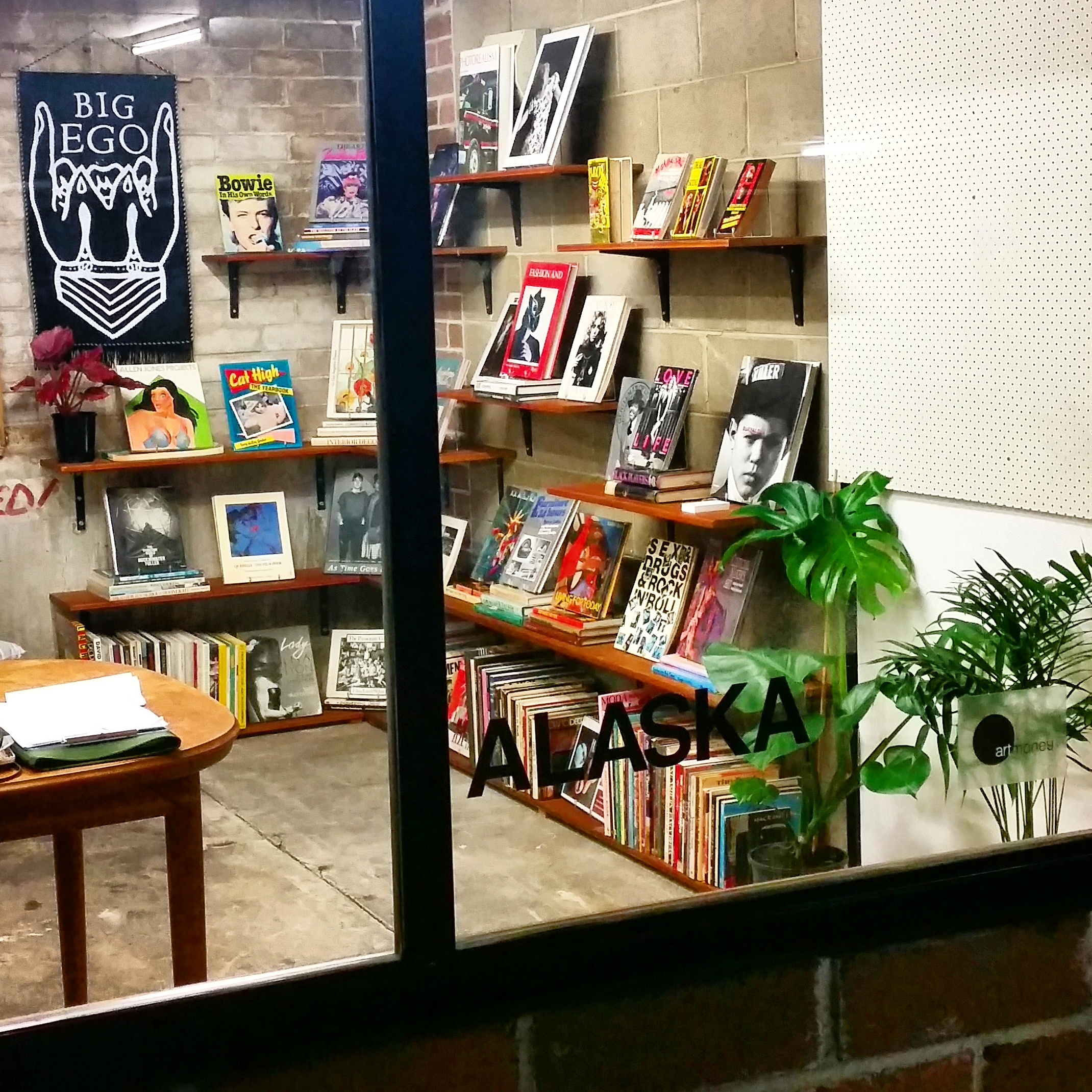
Image courtesy of Raquel Caballero
© Hello Bookshop 2016. Unauthorized use and/or duplication of this material without express and written permission from this blog’s author and/or owner is strictly prohibited.
